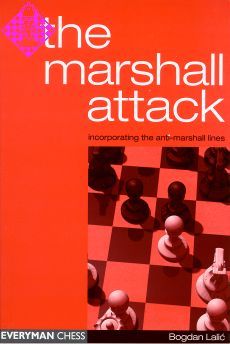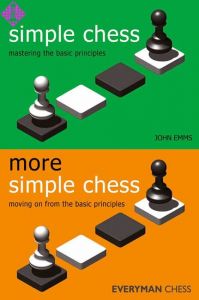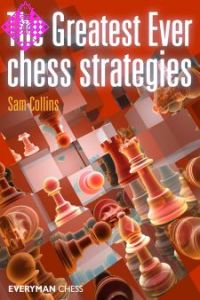Artikelnummer
LOLALTMA
Autor
The Marshall Attack
incorporating the anti-marshall lines
176 Seiten, kartoniert, Everyman, 1. Auflage 2003
Final vergriffen
Renowned chess theoretician and Grandmaster Bogdan Lalic reveals the secrets of the Marshall Attack, one of the most popular and controversial openings in the history of chess. Bogdan Lalic is one of the most prominent figures on the international tournament circuit.
The Marshall Attack is one of the oldest and most important openings in the history of chess. Black sacrifices a pawn against the Ruy Lopez in exchange for a long-lasting attack. Generations of the world's top players have fought on the Marshall battleground, but the final verdict on its-soundness has not yet been reached. However, of one thing you can be sure: Black certainly has a lot of fun in trying to checkmate the white king! It is perhaps because of this reason that as White, many Grandmasters, including the world number one Garry Kasparov, have decided to avoid the issue altogether, preferring the more tranquil waters of Anti-Marshall systems. The ideas and strategies of both approaches are studied in depth here by a renowned openings theoretician.
- An ideal weapon at all levels
- Written by a leading openings expert
- Full and up-to-date coverage of all the fashionable lines
The Marshall Attack is nowadays regarded as one of the most popular and reliable of openings against 1 e4. One only has to point to the top players and specialists who play it: Adams, Ivan Sokolov, Svidler, Short, Khalifman, Kamsky (before he retired), Nunn, Blatny etc.
What has attracted all of them to the Marshall Attack? Certainly the fact that the Marshall is a counterattacking opening helps a lot. With a bold opening Black wants, from the start, to take the initiative from White.
Basically, Black in the Marshall Attack gets the type of position he wants, usually at the cost of a pawn, which does not happen in other semi-open openings such as the French, Caro Kann, Alekhine, Pirc and Scandinavian. In the Marshall Black enjoys plenty of space for his pieces and the sacrifice of a pawn is a small price to pay for it. With energetic play, Black strives for the initiative, which forces White from the start to decide whether to accept the gauntlet by taking the gambit or to chicken out.
The other argument can be that the Marshall Gambit consists of many drawish lines - note that even Anand has recently been known to prepare forced drawing variations for Black in important games. This is true and is probably the main reason why Gary Kasparov, with the white pieces, never allows the Marshall Gambit.
I have to admit that it was a big job for me to include both the Marshall Gambit and the Anti-Marshall, especially due to space limitations. Surely there are more, much more, than around 100 important games played in such a complicated opening? Therefore I had to minimise coverage in some variations due to lack of space (for instance, in the 8 a4 Bb7 9 d3 Anti-Marshall I have concentrated mainly on the promising sideline 9...Re8!?). In general I have tried to deal with the most important recent games, including those played in early 2003.
The book is divided into three parts:
Part 1: The Main Line Marshall
Part 2: Other Marshalls
Part 3: The Anti-Marshall
Altogether there are 105 games over ten chapters. In each chapter I have done a survey explaining the various ideas, often recommending what to do and what not to do.
In the Anti-Marshall I have included all lines where White avoids the critical position after 8 c3 d5, plus the extra option of the increasingly popular 8 c3 d5 9 d4!?.
...
A lot of thanks should go to former World Champion Boris Spassky, who was playing it successfully in his Candidate matches in the mid 1960s (he blunted Mikhail Tal's favourite move 1 e4 in their 1965 match) and soon die Marshall Gambit gained the nickname 'drawing weapon'.
However, in this book the reader will see plenty of beautiful sacrifices and nice kingside attacks by both White and Black (I tried to be objective). Sometimes I was having sleepless nights checking analysis and critical positions with Fritz7 and the results were amazing - once the legendary late World Champion Mikhail Tal gave a wrong assessment! This just confirms how the Marshall Gambit is rich in possibilities for both sides and it will be some time, if ever, before the refutation is found.
I would like to thank James Coleman and Dave Bland for supplying me with games that had not appeared in my database.
Also, I would like to devote this book to my late parents Dr Dragan Lalic and Dr Nellie Lalic, who supported me with my chess during their lives.
Bogdan Lalic, Sutton, June 2003, Introduction
The Marshall Attack is one of the oldest and most important openings in the history of chess. Black sacrifices a pawn against the Ruy Lopez in exchange for a long-lasting attack. Generations of the world's top players have fought on the Marshall battleground, but the final verdict on its-soundness has not yet been reached. However, of one thing you can be sure: Black certainly has a lot of fun in trying to checkmate the white king! It is perhaps because of this reason that as White, many Grandmasters, including the world number one Garry Kasparov, have decided to avoid the issue altogether, preferring the more tranquil waters of Anti-Marshall systems. The ideas and strategies of both approaches are studied in depth here by a renowned openings theoretician.
- An ideal weapon at all levels
- Written by a leading openings expert
- Full and up-to-date coverage of all the fashionable lines
The Marshall Attack is nowadays regarded as one of the most popular and reliable of openings against 1 e4. One only has to point to the top players and specialists who play it: Adams, Ivan Sokolov, Svidler, Short, Khalifman, Kamsky (before he retired), Nunn, Blatny etc.
What has attracted all of them to the Marshall Attack? Certainly the fact that the Marshall is a counterattacking opening helps a lot. With a bold opening Black wants, from the start, to take the initiative from White.
Basically, Black in the Marshall Attack gets the type of position he wants, usually at the cost of a pawn, which does not happen in other semi-open openings such as the French, Caro Kann, Alekhine, Pirc and Scandinavian. In the Marshall Black enjoys plenty of space for his pieces and the sacrifice of a pawn is a small price to pay for it. With energetic play, Black strives for the initiative, which forces White from the start to decide whether to accept the gauntlet by taking the gambit or to chicken out.
The other argument can be that the Marshall Gambit consists of many drawish lines - note that even Anand has recently been known to prepare forced drawing variations for Black in important games. This is true and is probably the main reason why Gary Kasparov, with the white pieces, never allows the Marshall Gambit.
I have to admit that it was a big job for me to include both the Marshall Gambit and the Anti-Marshall, especially due to space limitations. Surely there are more, much more, than around 100 important games played in such a complicated opening? Therefore I had to minimise coverage in some variations due to lack of space (for instance, in the 8 a4 Bb7 9 d3 Anti-Marshall I have concentrated mainly on the promising sideline 9...Re8!?). In general I have tried to deal with the most important recent games, including those played in early 2003.
The book is divided into three parts:
Part 1: The Main Line Marshall
Part 2: Other Marshalls
Part 3: The Anti-Marshall
Altogether there are 105 games over ten chapters. In each chapter I have done a survey explaining the various ideas, often recommending what to do and what not to do.
In the Anti-Marshall I have included all lines where White avoids the critical position after 8 c3 d5, plus the extra option of the increasingly popular 8 c3 d5 9 d4!?.
...
A lot of thanks should go to former World Champion Boris Spassky, who was playing it successfully in his Candidate matches in the mid 1960s (he blunted Mikhail Tal's favourite move 1 e4 in their 1965 match) and soon die Marshall Gambit gained the nickname 'drawing weapon'.
However, in this book the reader will see plenty of beautiful sacrifices and nice kingside attacks by both White and Black (I tried to be objective). Sometimes I was having sleepless nights checking analysis and critical positions with Fritz7 and the results were amazing - once the legendary late World Champion Mikhail Tal gave a wrong assessment! This just confirms how the Marshall Gambit is rich in possibilities for both sides and it will be some time, if ever, before the refutation is found.
I would like to thank James Coleman and Dave Bland for supplying me with games that had not appeared in my database.
Also, I would like to devote this book to my late parents Dr Dragan Lalic and Dr Nellie Lalic, who supported me with my chess during their lives.
Bogdan Lalic, Sutton, June 2003, Introduction
Renowned chess theoretician and Grandmaster Bogdan Lalic reveals the secrets of the Marshall Attack, one of the most popular and controversial openings in the history of chess. Bogdan Lalic is one of the most prominent figures on the international tournament circuit.
The Marshall Attack is one of the oldest and most important openings in the history of chess. Black sacrifices a pawn against the Ruy Lopez in exchange for a long-lasting attack. Generations of the world's top players have fought on the Marshall battleground, but the final verdict on its-soundness has not yet been reached. However, of one thing you can be sure: Black certainly has a lot of fun in trying to checkmate the white king! It is perhaps because of this reason that as White, many Grandmasters, including the world number one Garry Kasparov, have decided to avoid the issue altogether, preferring the more tranquil waters of Anti-Marshall systems. The ideas and strategies of both approaches are studied in depth here by a renowned openings theoretician.
- An ideal weapon at all levels
- Written by a leading openings expert
- Full and up-to-date coverage of all the fashionable lines
The Marshall Attack is nowadays regarded as one of the most popular and reliable of openings against 1 e4. One only has to point to the top players and specialists who play it: Adams, Ivan Sokolov, Svidler, Short, Khalifman, Kamsky (before he retired), Nunn, Blatny etc.
What has attracted all of them to the Marshall Attack? Certainly the fact that the Marshall is a counterattacking opening helps a lot. With a bold opening Black wants, from the start, to take the initiative from White.
Basically, Black in the Marshall Attack gets the type of position he wants, usually at the cost of a pawn, which does not happen in other semi-open openings such as the French, Caro Kann, Alekhine, Pirc and Scandinavian. In the Marshall Black enjoys plenty of space for his pieces and the sacrifice of a pawn is a small price to pay for it. With energetic play, Black strives for the initiative, which forces White from the start to decide whether to accept the gauntlet by taking the gambit or to chicken out.
The other argument can be that the Marshall Gambit consists of many drawish lines - note that even Anand has recently been known to prepare forced drawing variations for Black in important games. This is true and is probably the main reason why Gary Kasparov, with the white pieces, never allows the Marshall Gambit.
I have to admit that it was a big job for me to include both the Marshall Gambit and the Anti-Marshall, especially due to space limitations. Surely there are more, much more, than around 100 important games played in such a complicated opening? Therefore I had to minimise coverage in some variations due to lack of space (for instance, in the 8 a4 Bb7 9 d3 Anti-Marshall I have concentrated mainly on the promising sideline 9...Re8!?). In general I have tried to deal with the most important recent games, including those played in early 2003.
The book is divided into three parts:
Part 1: The Main Line Marshall
Part 2: Other Marshalls
Part 3: The Anti-Marshall
Altogether there are 105 games over ten chapters. In each chapter I have done a survey explaining the various ideas, often recommending what to do and what not to do.
In the Anti-Marshall I have included all lines where White avoids the critical position after 8 c3 d5, plus the extra option of the increasingly popular 8 c3 d5 9 d4!?.
...
A lot of thanks should go to former World Champion Boris Spassky, who was playing it successfully in his Candidate matches in the mid 1960s (he blunted Mikhail Tal's favourite move 1 e4 in their 1965 match) and soon die Marshall Gambit gained the nickname 'drawing weapon'.
However, in this book the reader will see plenty of beautiful sacrifices and nice kingside attacks by both White and Black (I tried to be objective). Sometimes I was having sleepless nights checking analysis and critical positions with Fritz7 and the results were amazing - once the legendary late World Champion Mikhail Tal gave a wrong assessment! This just confirms how the Marshall Gambit is rich in possibilities for both sides and it will be some time, if ever, before the refutation is found.
I would like to thank James Coleman and Dave Bland for supplying me with games that had not appeared in my database.
Also, I would like to devote this book to my late parents Dr Dragan Lalic and Dr Nellie Lalic, who supported me with my chess during their lives.
Bogdan Lalic, Sutton, June 2003, Introduction
The Marshall Attack is one of the oldest and most important openings in the history of chess. Black sacrifices a pawn against the Ruy Lopez in exchange for a long-lasting attack. Generations of the world's top players have fought on the Marshall battleground, but the final verdict on its-soundness has not yet been reached. However, of one thing you can be sure: Black certainly has a lot of fun in trying to checkmate the white king! It is perhaps because of this reason that as White, many Grandmasters, including the world number one Garry Kasparov, have decided to avoid the issue altogether, preferring the more tranquil waters of Anti-Marshall systems. The ideas and strategies of both approaches are studied in depth here by a renowned openings theoretician.
- An ideal weapon at all levels
- Written by a leading openings expert
- Full and up-to-date coverage of all the fashionable lines
The Marshall Attack is nowadays regarded as one of the most popular and reliable of openings against 1 e4. One only has to point to the top players and specialists who play it: Adams, Ivan Sokolov, Svidler, Short, Khalifman, Kamsky (before he retired), Nunn, Blatny etc.
What has attracted all of them to the Marshall Attack? Certainly the fact that the Marshall is a counterattacking opening helps a lot. With a bold opening Black wants, from the start, to take the initiative from White.
Basically, Black in the Marshall Attack gets the type of position he wants, usually at the cost of a pawn, which does not happen in other semi-open openings such as the French, Caro Kann, Alekhine, Pirc and Scandinavian. In the Marshall Black enjoys plenty of space for his pieces and the sacrifice of a pawn is a small price to pay for it. With energetic play, Black strives for the initiative, which forces White from the start to decide whether to accept the gauntlet by taking the gambit or to chicken out.
The other argument can be that the Marshall Gambit consists of many drawish lines - note that even Anand has recently been known to prepare forced drawing variations for Black in important games. This is true and is probably the main reason why Gary Kasparov, with the white pieces, never allows the Marshall Gambit.
I have to admit that it was a big job for me to include both the Marshall Gambit and the Anti-Marshall, especially due to space limitations. Surely there are more, much more, than around 100 important games played in such a complicated opening? Therefore I had to minimise coverage in some variations due to lack of space (for instance, in the 8 a4 Bb7 9 d3 Anti-Marshall I have concentrated mainly on the promising sideline 9...Re8!?). In general I have tried to deal with the most important recent games, including those played in early 2003.
The book is divided into three parts:
Part 1: The Main Line Marshall
Part 2: Other Marshalls
Part 3: The Anti-Marshall
Altogether there are 105 games over ten chapters. In each chapter I have done a survey explaining the various ideas, often recommending what to do and what not to do.
In the Anti-Marshall I have included all lines where White avoids the critical position after 8 c3 d5, plus the extra option of the increasingly popular 8 c3 d5 9 d4!?.
...
A lot of thanks should go to former World Champion Boris Spassky, who was playing it successfully in his Candidate matches in the mid 1960s (he blunted Mikhail Tal's favourite move 1 e4 in their 1965 match) and soon die Marshall Gambit gained the nickname 'drawing weapon'.
However, in this book the reader will see plenty of beautiful sacrifices and nice kingside attacks by both White and Black (I tried to be objective). Sometimes I was having sleepless nights checking analysis and critical positions with Fritz7 and the results were amazing - once the legendary late World Champion Mikhail Tal gave a wrong assessment! This just confirms how the Marshall Gambit is rich in possibilities for both sides and it will be some time, if ever, before the refutation is found.
I would like to thank James Coleman and Dave Bland for supplying me with games that had not appeared in my database.
Also, I would like to devote this book to my late parents Dr Dragan Lalic and Dr Nellie Lalic, who supported me with my chess during their lives.
Bogdan Lalic, Sutton, June 2003, Introduction
| EAN | 9781857442441 |
|---|---|
| Gewicht | 280 g |
| Hersteller | Everyman |
| Breite | 15,5 cm |
| Höhe | 23,2 cm |
| Medium | Buch |
| Erscheinungsjahr | 2003 |
| Autor | Bogdan Lalic |
| Sprache | Englisch |
| Auflage | 1 |
| ISBN-10 | 185744244X |
| ISBN-13 | 9781857442441 |
| Seiten | 176 |
| Einband | kartoniert |
004 Bibliography
005 Introduction
1 e4 e5 2 Nf3 Nc6 3 Bb5 a6 4 Ba4 Nf6 5 0-0 Be7 6 Re1 b5 7 Bb3 0-0
Part 1: The Main Line Marshall
8 c3 d5 9 exd5 Nxd5 10 Nxe5 Nxe5 11 Rxe5 c6
007 1 The Old Main Line: 12 d4 and 15 Be3
020 2 The Modern Method: 12 d4 and 15 Re4
034 3 12 d3 Bd6 13 Re1Qh4 14 g3 Qh3 15 Re4
063 4 12th and 13th Move Options for White
Part 2: Other Marshalls
084 5 Alternatives to the Main Line 11...c6
104 6 Steiner Variation: 9...e4
Part 3: The Anti-Marshall
113 7 Anti-Marshall with 8 h3 Bb7 9 d3 d6 10 a3
136 8 Anti-Marshall with 8 a4
151 9 Anti-Marshall with 8 d4!?
161 10 Other Anti-Marshalls
174 Index of Complete Games
The Marshall Attack is nowadays regarded as one of the most popular and reliable of openings against 1 e4. One only has to point to the top players and specialists who play it: Adams, Ivan Sokolov, Svidler, Short, Khalifman, Kamsky (before he retired), Nunn, Blatny etc.
What has attracted all of them to the Marshall Attack? Certainly the fact that the Marshall is a counterattacking opening helps a lot. With a bold opening Black wants, from the start, to take the initiative from White.
Basically, Black in the Marshall Attack gets the type of position he wants, usually at the cost of a pawn, which does not happen in other semi-open openings such as the French, Caro Kann, Alekhine, Pirc and Scandinavian. In the Marshall Black enjoys plenty of space for his pieces and the sacrifice of a pawn is a small price to pay for it. With energetic play, Black strives for the initiative, which forces White from the start to decide whether to accept the gauntlet by taking the gambit or to chicken out.
The other argument can be that the Marshall Gambit consists of many drawish lines - note that even Anand has recently been known to prepare forced drawing variations for Black in important games. This is true and is probably the main reason why Gary Kasparov, with the white pieces, never allows the Marshall Gambit.
I have to admit that it was a big job for me to include both the Marshall Gambit and the Anti-Marshall, especially due to space limitations. Surely there are more, much more, than around 100 important games played in such a complicated opening? Therefore I had to minimise coverage in some variations due to lack of space (for instance, in the 8 a4 Bb7 9 d3 Anti-Marshall I have concentrated mainly on the promising sideline 9...Re8!?). In general I have tried to deal with the most important recent games, including those played in early 2003.
The book is divided into three parts:
Part 1: The Main Line Marshall
Part 2: Other Marshalls
Part 3: The Anti-Marshall
Altogether there are 105 games over ten chapters. In each chapter I have done a survey explaining the various ideas, often recommending what to do and what not to do.
In the Anti-Marshall I have included all lines where White avoids the critical position after 8 c3 d5, plus the extra option of the increasingly popular 8 c3 d5 9 d4!?.
...
A lot of thanks should go to former World Champion Boris Spassky, who was playing it successfully in his Candidate matches in the mid 1960s (he blunted Mikhail Tal's favourite move 1 e4 in their 1965 match) and soon die Marshall Gambit gained the nickname 'drawing weapon'.
However, in this book the reader will see plenty of beautiful sacrifices and nice kingside attacks by both White and Black (I tried to be objective). Sometimes I was having sleepless nights checking analysis and critical positions with Fritz7 and the results were amazing - once the legendary late World Champion Mikhail Tal gave a wrong assessment! This just confirms how the Marshall Gambit is rich in possibilities for both sides and it will be some time, if ever, before the refutation is found.
I would like to thank James Coleman and Dave Bland for supplying me with games that had not appeared in my database.
Also, I would like to devote this book to my late parents Dr Dragan Lalic and Dr Nellie Lalic, who supported me with my chess during their lives.
Bogdan Lalic, Sutton, June 2003, Introduction
005 Introduction
1 e4 e5 2 Nf3 Nc6 3 Bb5 a6 4 Ba4 Nf6 5 0-0 Be7 6 Re1 b5 7 Bb3 0-0
Part 1: The Main Line Marshall
8 c3 d5 9 exd5 Nxd5 10 Nxe5 Nxe5 11 Rxe5 c6
007 1 The Old Main Line: 12 d4 and 15 Be3
020 2 The Modern Method: 12 d4 and 15 Re4
034 3 12 d3 Bd6 13 Re1Qh4 14 g3 Qh3 15 Re4
063 4 12th and 13th Move Options for White
Part 2: Other Marshalls
084 5 Alternatives to the Main Line 11...c6
104 6 Steiner Variation: 9...e4
Part 3: The Anti-Marshall
113 7 Anti-Marshall with 8 h3 Bb7 9 d3 d6 10 a3
136 8 Anti-Marshall with 8 a4
151 9 Anti-Marshall with 8 d4!?
161 10 Other Anti-Marshalls
174 Index of Complete Games
The Marshall Attack is nowadays regarded as one of the most popular and reliable of openings against 1 e4. One only has to point to the top players and specialists who play it: Adams, Ivan Sokolov, Svidler, Short, Khalifman, Kamsky (before he retired), Nunn, Blatny etc.
What has attracted all of them to the Marshall Attack? Certainly the fact that the Marshall is a counterattacking opening helps a lot. With a bold opening Black wants, from the start, to take the initiative from White.
Basically, Black in the Marshall Attack gets the type of position he wants, usually at the cost of a pawn, which does not happen in other semi-open openings such as the French, Caro Kann, Alekhine, Pirc and Scandinavian. In the Marshall Black enjoys plenty of space for his pieces and the sacrifice of a pawn is a small price to pay for it. With energetic play, Black strives for the initiative, which forces White from the start to decide whether to accept the gauntlet by taking the gambit or to chicken out.
The other argument can be that the Marshall Gambit consists of many drawish lines - note that even Anand has recently been known to prepare forced drawing variations for Black in important games. This is true and is probably the main reason why Gary Kasparov, with the white pieces, never allows the Marshall Gambit.
I have to admit that it was a big job for me to include both the Marshall Gambit and the Anti-Marshall, especially due to space limitations. Surely there are more, much more, than around 100 important games played in such a complicated opening? Therefore I had to minimise coverage in some variations due to lack of space (for instance, in the 8 a4 Bb7 9 d3 Anti-Marshall I have concentrated mainly on the promising sideline 9...Re8!?). In general I have tried to deal with the most important recent games, including those played in early 2003.
The book is divided into three parts:
Part 1: The Main Line Marshall
Part 2: Other Marshalls
Part 3: The Anti-Marshall
Altogether there are 105 games over ten chapters. In each chapter I have done a survey explaining the various ideas, often recommending what to do and what not to do.
In the Anti-Marshall I have included all lines where White avoids the critical position after 8 c3 d5, plus the extra option of the increasingly popular 8 c3 d5 9 d4!?.
...
A lot of thanks should go to former World Champion Boris Spassky, who was playing it successfully in his Candidate matches in the mid 1960s (he blunted Mikhail Tal's favourite move 1 e4 in their 1965 match) and soon die Marshall Gambit gained the nickname 'drawing weapon'.
However, in this book the reader will see plenty of beautiful sacrifices and nice kingside attacks by both White and Black (I tried to be objective). Sometimes I was having sleepless nights checking analysis and critical positions with Fritz7 and the results were amazing - once the legendary late World Champion Mikhail Tal gave a wrong assessment! This just confirms how the Marshall Gambit is rich in possibilities for both sides and it will be some time, if ever, before the refutation is found.
I would like to thank James Coleman and Dave Bland for supplying me with games that had not appeared in my database.
Also, I would like to devote this book to my late parents Dr Dragan Lalic and Dr Nellie Lalic, who supported me with my chess during their lives.
Bogdan Lalic, Sutton, June 2003, Introduction
Mehr von Everyman
-
 True Combat Chess18,50 €
True Combat Chess18,50 € -
 Your Best Move19,95 €
Your Best Move19,95 € -
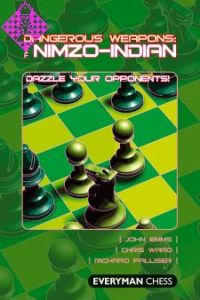 The Nimzo-Indian21,95 €
The Nimzo-Indian21,95 € -
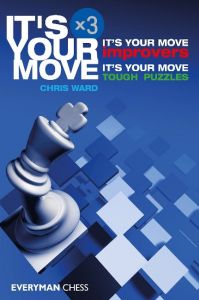 It's Your Move x 324,95 €
It's Your Move x 324,95 € -
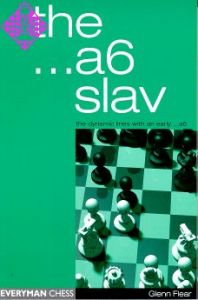 The ...a6 Slav18,95 €
The ...a6 Slav18,95 € - Mehr von Everyman

